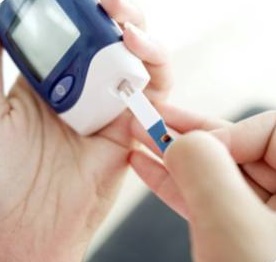1. Low blood sugar (hypoglycaemia) – too much insulin
2. High blood sugar (hyperglycaemia) – too little insulin
Hypoglycaemia
Low blood sugar or a lack of the hormone glucagon needed for regulation.
Can be very serious within minutes and often dangerous within an hour.
Recognition:
- The casualty may be confused and have a lowered level of consciousness.
- Cold, clammy skin may also be present.
- The pulse will be strong and the breathing shallow.
- Aggression is another sign of hypoglycaemia.
Treatment:
- If the casualty is conscious give them a sugary drink or sugary food!
- Aim to give 10g of glucose for children (15-20g for adults)If the casualty is conscious give them a sugary drink or sugary food!
- Aim to give 10g of glucose for children (15-20g for adults)
- If they respond give them more and stay with them until they feel better
- If they do not respond within 15 minutes call 999
- If they become unconscious maintain the airway and place them in the recovery position and call 999
Hyperglycaemia
High blood sugar levels or a lack of the hormone insulin. In this form of diabetes the casualty will have an increased thirst and will be passing a lot of urine.
Recognition:
- They will feel weak and nauseous, with a dry warm skin.
- The breathing may be heavy and laboured.
- There may also be a smell of acetone on their breath.
Treatment:
A ‘hyper’ can take 12 hours or longer to develop. A first aider must never attempt to administer drugs or insulin in this situation without thorough and well-structured training and action plans by a qualified medical professional. Instead, help should be summoned as soon as possible via 999 and vital signs should be carefully monitored.




